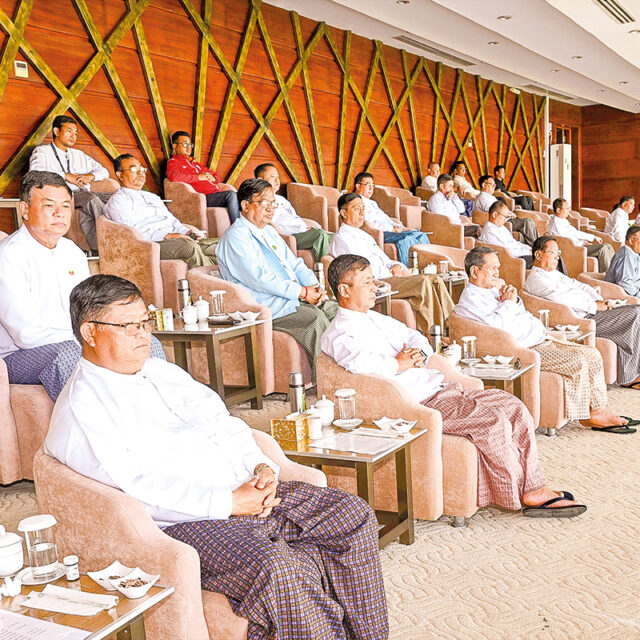Human health is affected by air pollution, causing cardiometabolic, respiratory, and neurological diseases and increased mortality. Pollutants include gases [for example, nitrogen dioxide (NO2), NOx, and ozone] and particulate matter, which is commonly characterized by its aerodynamic diameter of less than 2.5 µm (PM2.5) or less than 10 pm (PM10). Air pollutants are mainly emitted by energy production, industry, traffic, heating, and agriculture. Exposure to air pollution affects most organ systems, causing a wide array of physiological changes, organ dysfunction, and manifest clinical disease (1, 2). Therefore, a burden of disease assessment that adequately reflects all related exposure-outcome relationships and their impacts on disease and mortality in the target population is important to guide population-based prevention.
Chronic exposure to air pollutants elicits oxidative stress, pulmonary and systemic inflammation, and impairment of the autonomic nervous system, which leads to vascular dysfunction, atherogenesis, impaired metabolism, and other adverse subclinical effects (1). Over time, manifest disease develops, including ischemic heart disease, stroke, hypertension, congestive heart failure, and arrhythmias. Pulmonary effects, such as lower respiratory tract infections, chronic obstructive pulmonary disease (COPD), asthma, lung cancer, and acute and chronic bronchitis, are also associated with air pollution. Likewise, the incidence of type 2 diabetes mellitus, dementia, Parkinson’s disease, decreased birth weight, and premature birth are increased with exposure to air pollution. Depleted or not fully developed defence mechanisms, resulting from either very young or old age, chronic disease, social disadvantage, and genetic susceptibility, are also thought to be important modifiers of the risk of developing illness from air pollution. Hence, populations with a high prevalence of ageing, chronically diseased, and socially disadvantaged people are particularly susceptible to air pollution-associated disease. Thus, in ageing societies, the burden of disease from air pollution will continue to pose an important public health concern.
Understanding exposure-response relationships can help guide what can be considered “acceptable” levels of exposure to air pollution, which would, in turn, affect, for example, town planning and clean air policies. Nonlinear exposure-response functions for the effect of air pollution on human health were identified in 2006 (3), and more recent evidence shows stronger effects per unit of exposure at lower concentrations of particulate matter and NO2 compared with exposure at higher amounts (4). However, this supralinear relationship, which is an important tool to guide prevention and clean air policies, has not been reflected in the European health impact assessment (HIA). Instead, linear exposure-response relationships derived from studies conducted at much higher pollutant concentrations are often used, resulting in an underestimation of the preventable burden of disease, specifically in areas of low exposure. Reconsidering the supralinear nature of the relationship between exposure and health effects could, therefore, have important implications for how air pollution is managed.
Two large bodies of evidence in air pollution research support a rethinking of current practices in evaluating the health effects of air pollution for prevention and policy: In September 2021, the World Health Organization (WHO) substantially reinforced its Air Quality Guidelines for clean air by reducing the recommended annual levels of PM2.5 from 10 µg/m3 to 5 µg/ m3 and those of NO2 from 40 µg/m3 to 10 µg/m3 and introducing a new guideline for peak-season ozone at 60 µg/m3 (5). Notably, WHO stresses that these are not thresholds but levels above which serious health effects occur with high certainty. This means that even below these levels, health effects can be observed and need to be considered when estimating the burden of disease on society and healthcare systems.
Additionally, evidence from mega-cohorts with several million participants from high-income countries with exposure to relatively low mean air pollutant concentrations is now emerging. These studies, conducted in Europe, Canada, and the US, encompass the pooling of classical cohort studies with in-depth confounder controls as well as large national administrative cohorts in which selection bias and loss to follow-up can be minimized (6-9). Furthermore, a European pooled cohort study used back extrapolation of exposures to 1990 across Europe and conducted a time-varying analysis based on the available data for each cohort, thereby preventing an overestimation of effect sizes (6). Notably, the studies show effects on health even at air pollutant concentrations below the WHO Air Quality Guideline values, with larger effect sizes at lower levels of exposure. Potential explanations for this include but are not limited to less exposure misclassification because of denser monitoring networks and higher-resolution exposure models in high-income and low-exposure countries, differences in the air pollution mixture at low concentrations, and differences in demography with an increasingly higher proportion of older and susceptible people.
These findings and the WHO recommendations have the potential to seriously affect current practices and environmental regulations in high-income countries. For example, current annual standards (as of January 2024) for PM2.5 are 12 and 25 µg/ m3, and for NO2, the annual standards are 100 and 40 µg/m3 in the US and Europe, respectively. However, there is now a move toward lowering the standards. By 7 February 2024, the US Environmental Protection Agency (EPA) strengthened the PM2.5 standard to 9 µg/m3. The European parliament had a provisional agreement on 20 February 2024 that decreased annual limits for PM2.5 to 10 µg/m3 and those for NO2 to 20 µg/m3. According to the European Environmental Agency briefing (10), in 2022, less than 1% of Europe’s urban population was exposed to PM2.5 levels exceeding the current European annual standards, whereas 97 per cent exceeded the new 2021 WHO Air Quality Guidelines (5). Hence, present levels of air pollution may cause a substantial disease burden in high-income countries experiencing relatively low exposure levels because the current burden of disease calculations may substantially underestimate the true burden.
HIA, with the burden of disease calculations, is the systematic assessment of the potential effects of a particular risk factor on the health of a population that produces estimates of attributable deaths, years of lost life (YLLs), and disability-adjusted life years (DALYs). Central input data for HIA include the effects of each pollutant outcome combination, such as PM2.5 concentration and mortality or disease incidence. Many large HIA studies have used linear exposure-response functions from global meta-analyses (5), assigning the same percentage increase in health effects irrespective of the exposure level. For example, using the global linear exposure-response function underlying the 2021 WHO Air Quality Guidelines resulted in a disease burden of 275,000 deaths attributable to PM2.5 exposure in Europe in 2020 (11). However, when applying estimates from the supralinear exposure-response functions in HIA, the resulting disease burden in Europe from PM2.5 is -40 per cent greater, and from NO2, it is -110 per cent larger. This means that exposure to low concentrations of air pollutants has a greater impact on human health than previously appreciated. Furthermore, benefits from clean air regulations and co-benefits from greenhouse gas reduction measures, which often overlap, are larger than previously anticipated.
The effect of different exposure-response functions on mortality and the adaptation to a supralinear relationship with higher effects per unit mass at lower air pollutant concentrations has been suggested before. With new evidence emerging from several cohorts, the new Global Exposure Mortality Model (GEMM) was derived in 2018, confirming larger effect sizes on mortality at the low end of the exposure range (12). However, disease burden is not solely defined as increased mortality but also includes individuals who have spent many years living with sometimes disabling chronic disease. The effects on morbidity include higher incidences of cardiovascular disease and stroke, lung cancer, asthma, COPD, and diabetes associated with PM2.5, as well as the effect of NO2 on the incidence of childhood asthma, causing many years of life lived with potentially severe limitations. Data on the exposure-response function for the many pertinent morbidity outcomes were lacking for the low-exposure areas. Hence, it was not possible to define the shape of the exposure-response function in the low-exposure range for many diseases. Therefore, morbidity effects were either neglected or grossly underestimated in large-scale European HIA (13). Without these additions, important determinants of loss of economic and societal welfare from air pollution are left out. These determinants include pressure on healthcare systems and productivity losses due to sick leave. Without the inclusion of these parameters, the true burden of air pollution on population health will not be fully captured.
Another issue is the incorporation of other pollutants besides PM2.5 in HIA. Specifically, the independent causal effect of chronic NO2 exposure on health has been an issue of debate, mostly because of a scarcity of mechanistic evidence from toxicological studies and long-term epidemiological studies and because of a high spatial correlation between NO2 and other traffic-associated air pollutants. However, a controlled human exposure study led the US EPA to conclude that there are causal effects of short-term NO2 exposure on respiratory health (14), and a WH systematic review (15) demonstrated the presence of health effects of NO2 on COPD mortality and all-cause mortality down to levels as low as ten µg/m3 (10). Similarly, the effects of exposure to peak-season ozone on all-cause mortality have been documented in the 2021 WHO Air Quality Guidelines (9), but more research is needed to clarify the interaction of various pollutants and to incorporate these interactions in HIA. Along similar lines, the most susceptible groups are at the greatest risk for health effects from air pollution but will also benefit most from air pollution reduction policies. For a comprehensive assessment of the health impacts of air pollution and the benefits of mitigation, the interaction of susceptibility factors with pollution also needs to be considered.
The supralinear relationship between air pollution and health effects shows that population benefits from reductions in air pollution are still possible at low levels of air pollution, and in this case, the effects seem to be greater per unit of reduction. The benefits of exposure reduction may, therefore, currently be underestimated in low-exposure areas, calling for the development of refined and broader application of exposure-response functions for HIA. Hence, while maintaining focus on the highest-pollute areas, the very real effects of air pollution in low-exposure areas should be addressed with equivalent commitment.
REFERENCES AND NOTES
G D Thurston et al, Eur Respir J 49, 1600419 (2017).














